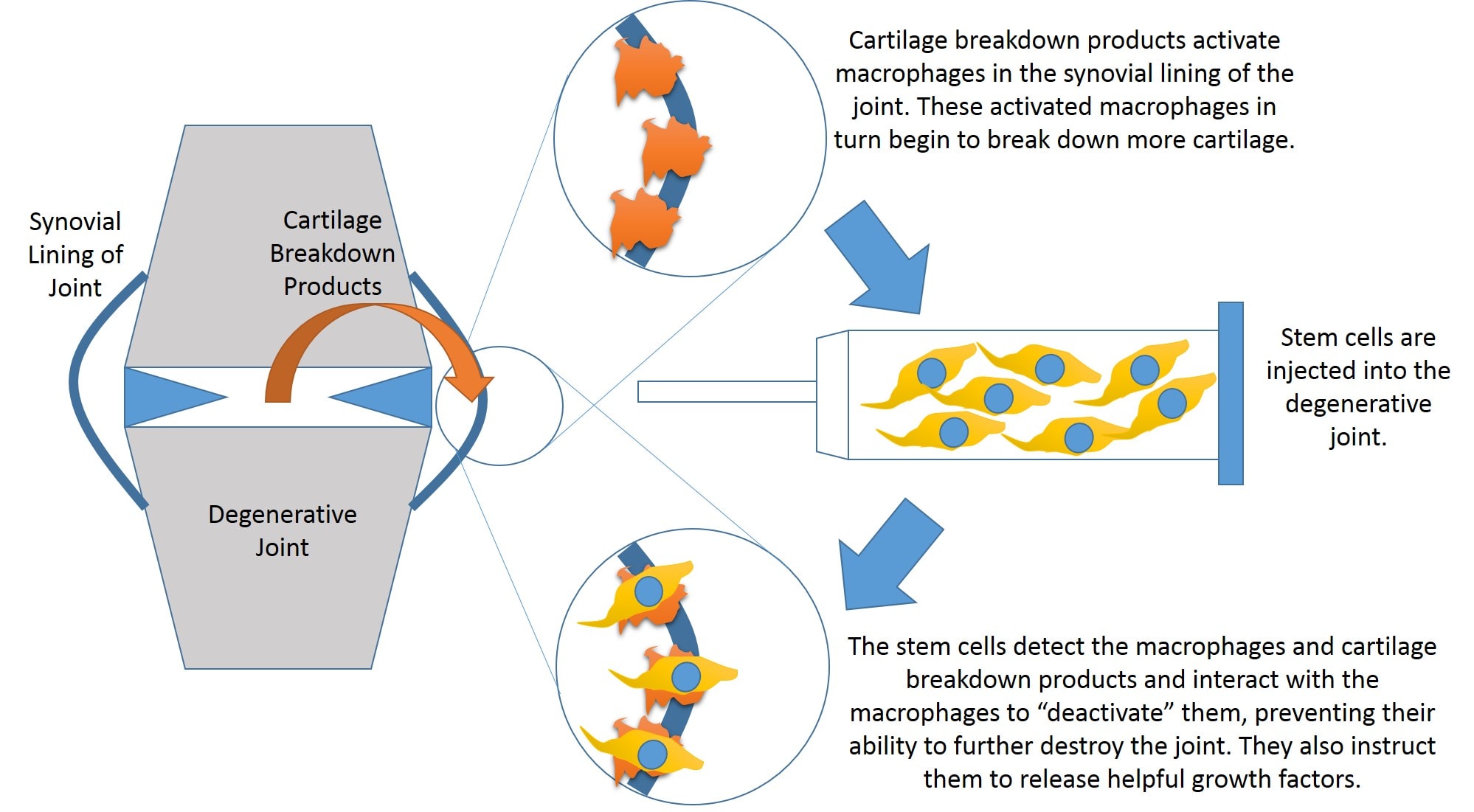Stem Cells Help Prevent Arthritis or How to Turn the Bad Pac Man Cells into Good Guys
We know that stem cells help prevent arthritis, but everyone is still figuring out why stem cells seem to help patients with severely degenerated joints. Our own research as well as that of others shows that stem cells may be able to help with joint pain and increase function in patients severe arthritis. A new research article theorizes how all of this may work. It shows that MSCs interact with destructive macrophages and convince them to play nice. I’ve taken these rather difficult to understand jargon laden concepts and created the above illustration to make them simpler. In a degenerating joint with severe arthritis, the lining of the joint (called the synovial lining) becomes thickened with macrophages. These cells are like big pac man cells that eat the cellular debris and help clean up the garbage in the joint. The problem with arthritis is that all the debris causes these pac men to become more activated so that they eventually begin gobbling up even some of the good joint cartilage. This causes more damage in a negative feedback loop. This research team found that in an animal model of joint disease, stem cells injected into the joint detected the activated macrophages and deactivated them, allowing the pac man function to be turned off. In addition, the stem cells instructed the bad macrophages to secrete good growth factors, essentially turning them from destroyers to helpers. They believe this explains the long-term anti-inflammatory effect seen with stem cells. The upshot? This is another advance in our understanding of how the stem cells may decrease pain and swelling. It also suggests that stem cells may have a disease modifying effect, by changing the bad pac man cells into good guys thus reducing the self-destruction of the joint. This model fits with what many physicians have observed in patients.

If you have questions or comments about this blog post, please email us at [email protected]
NOTE: This blog post provides general information to help the reader better understand regenerative medicine, musculoskeletal health, and related subjects. All content provided in this blog, website, or any linked materials, including text, graphics, images, patient profiles, outcomes, and information, are not intended and should not be considered or used as a substitute for medical advice, diagnosis, or treatment. Please always consult with a professional and certified healthcare provider to discuss if a treatment is right for you.

